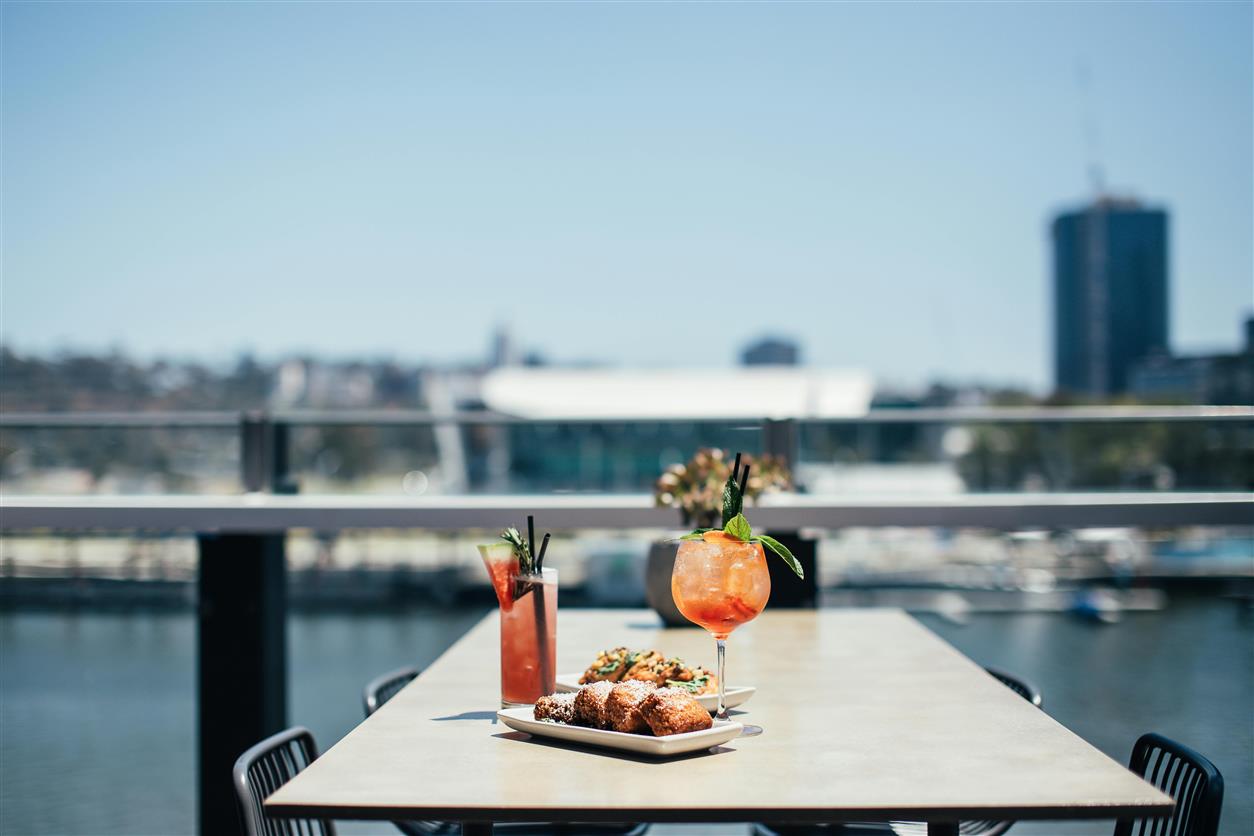
Introduction
Food is an integral part of any culture, and traveling provides an extraordinary opportunity to explore and experience diverse culinary traditions. From street food stalls to Michelin-starred restaurants, the global landscape offers an array of flavors, techniques, and ingredients that can transform a meal into an unforgettable experience. This article delves into some of the best food destinations around the world, highlighting the unique culinary delights that define each region. Through an exploration of local dishes, food markets, and dining experiences, we’ll uncover how these destinations have earned their culinary acclaim.
1. Asia: A Fusion of Flavors
1.1. Bangkok, Thailand
Bangkok’s vibrant food scene is a blend of traditional Thai flavors and innovative culinary techniques:
- Street Food: The streets of Bangkok are lined with vendors offering iconic dishes such as Pad Thai, Som Tum (green papaya salad), and Mango Sticky Rice. The bustling night markets, like Khao San Road and Chatuchak, are perfect spots to sample a variety of street food.
- Michelin-Starred Dining: Bangkok also boasts high-end dining experiences, including restaurants like Gaggan, renowned for its progressive Indian cuisine, and Nahm, which offers traditional Thai dishes with a modern twist.
1.2. Tokyo, Japan
Tokyo is a paradise for food lovers, offering everything from sushi and ramen to kaiseki:
- Sushi: Tokyo’s Tsukiji Outer Market and the upscale Sushi Jiro showcase the art of sushi making. Fresh, high-quality fish and expertly prepared rice are hallmarks of this culinary experience.
- Ramen: Tokyo’s ramen scene features a variety of styles, from rich tonkotsu (pork bone broth) to lighter shoyu (soy sauce-based) broths. Popular spots include Ichiran Ramen and Ramen Nagi.
- Kaiseki: For a more refined experience, kaiseki restaurants like Kikunoi offer multi-course meals that highlight seasonal ingredients and artistic presentation.
1.3. Seoul, South Korea
Seoul’s culinary landscape is a vibrant mix of traditional Korean dishes and modern influences:
- Bibimbap and Kimchi: Bibimbap, a mixed rice dish with vegetables, meat, and spicy gochujang, is a staple in Seoul. Kimchi, fermented vegetables with a spicy kick, complements many meals.
- Gwangjang Market: This historic market is renowned for its food stalls offering delicacies such as bindaetteok (mung bean pancakes) and mayak gimbap (mini rice rolls).
- Fine Dining: Contemporary Korean cuisine is celebrated at restaurants like Jungsik, which combines traditional flavors with modern techniques.
2. Europe: A Taste of Tradition
2.1. Paris, France
Paris is synonymous with exquisite French cuisine, from pastries to gourmet dining:
- Bistros and Cafés: Parisian bistros like Le Comptoir du Relais serve classic dishes such as coq au vin and duck confit. Cafés like Café de Flore offer a quintessential Parisian experience with croissants and café au lait.
- Markets: The Marché des Enfants Rouges is one of Paris’s oldest markets, offering fresh produce, artisanal cheeses, and gourmet prepared foods.
- Fine Dining: Paris is home to numerous Michelin-starred restaurants, including Le Jules Verne in the Eiffel Tower and L’Arpège, known for its vegetable-focused dishes.
2.2. Barcelona, Spain
Barcelona’s food scene reflects the city’s Catalan heritage and Mediterranean influences:
- Tapas: Barcelona is famous for its tapas bars, where you can enjoy small plates like patatas bravas, croquetas, and jamón ibérico. La Boqueria Market is a must-visit for fresh tapas ingredients.
- Paella: Although originally from Valencia, paella is a beloved dish in Barcelona, with seafood and mixed varieties available at restaurants like Can Solé.
- Catalan Cuisine: Restaurants such as Cinc Sentits offer modern interpretations of traditional Catalan dishes, emphasizing local ingredients and innovative techniques.
2.3. Bologna, Italy
Bologna, known as the food capital of Italy, offers rich culinary traditions:
- Pasta: Bologna is renowned for its pasta dishes, particularly tagliatelle al ragù (often known as Bolognese sauce). Osteria dell’Orsa serves authentic renditions of this classic dish.
- Mortadella: The city is also famous for mortadella, a type of Italian sausage. Try this local specialty at La Prosciutteria.
- Markets: The Quadrilatero market area is a hub for fresh produce, meats, cheeses, and artisanal products, providing an authentic taste of Bolognese gastronomy.
3. Americas: Diverse and Delicious
3.1. New York City, USA
New York City’s culinary landscape is a melting pot of global cuisines:
- Bagels and Pizza: New York-style bagels and pizza are iconic, with establishments like Russ & Daughters for bagels and Di Fara Pizza for pizza delivering classic flavors.
- Food Markets: Chelsea Market and Smorgasburg offer a diverse range of food options, from gourmet tacos to artisanal donuts.
- Fine Dining: NYC is home to Michelin-starred restaurants such as Eleven Madison Park and Le Bernardin, showcasing world-class dining experiences.
3.2. Mexico City, Mexico
Mexico City’s food scene is rich with traditional Mexican flavors and modern innovations:
- Street Food: Tacos, tamales, and quesadillas are staple street foods found throughout the city. Mercado de San Juan offers a wide range of traditional and exotic ingredients.
- Fine Dining: Pujol and Quintonil are two of Mexico City’s top restaurants, offering contemporary Mexican cuisine with a focus on local ingredients and innovative techniques.
- Markets: La Merced and Mercado de Coyoacán are bustling markets where you can experience the vibrant flavors of Mexican cuisine.
3.3. Lima, Peru
Lima has emerged as a culinary hotspot, known for its fusion of Peruvian ingredients and international flavors:
- Ceviche: Lima is famous for its ceviche, a dish of marinated raw fish. Restaurante Pescados Capitales is renowned for its fresh and flavorful ceviche.
- Fine Dining: Central, Maido, and Astrid y Gastón are acclaimed restaurants in Lima, offering modern interpretations of Peruvian cuisine and showcasing local ingredients.
- Food Tours: Culinary tours provide a comprehensive experience of Lima’s food scene, including visits to local markets and tasting various Peruvian specialties.
4. Africa: Rich and Diverse Flavors
4.1. Marrakech, Morocco
Marrakech is a vibrant city known for its aromatic and flavorful cuisine:
- Tagine: Tagine, a slow-cooked stew made with meat, vegetables, and spices, is a staple of Moroccan cuisine. Try it at restaurants like Le Tobsil.
- Markets: The souks of Marrakech offer a sensory overload with spices, dried fruits, and street food. Jemaa el-Fnaa square is the heart of the city’s food scene, featuring food stalls and local delicacies.
- Mint Tea: Moroccan mint tea is a traditional beverage, often enjoyed with meals. Sip this sweet and refreshing tea at local cafés.
4.2. Cape Town, South Africa
Cape Town’s food scene is influenced by its diverse cultures and stunning natural surroundings:
- Braai: Braai, a South African barbecue, is a social and culinary tradition. Sample this dish at local establishments like The Test Kitchen.
- Seafood: Cape Town’s seafood is exceptional, with fresh catches such as snoek and calamari. The Waterfront area offers a range of seafood dining options.
- Wine: The nearby Stellenbosch region is renowned for its wine production. Enjoy wine tastings and gourmet meals at vineyards like Delaire Graff Estate.
5. Oceania: Fresh and Flavorful
5.1. Sydney, Australia
Sydney’s food scene is a blend of multicultural influences and local produce:
- Seafood: Sydney is known for its fresh seafood, including oysters, barramundi, and Moreton Bay bugs. Visit restaurants like Sydney Fish Market for an array of seafood options.
- Cafés: The city’s café culture is thriving, with spots like Single O and The Grounds of Alexandria offering exceptional coffee and breakfast dishes.
- Fusion Cuisine: Sydney’s diverse culinary scene includes fusion cuisine, blending global flavors with Australian ingredients. The Bentley Restaurant & Bar exemplifies this trend.
5.2. Wellington, New Zealand
Wellington is celebrated for its culinary innovation and local ingredients:
- Craft Beer and Food: Wellington’s craft beer scene is flourishing, with numerous breweries and pubs offering local brews and food pairings. Visit Garage Project for a unique experience.
- Farm-to-Table Dining: Restaurants like Logan Brown focus on farm-to-table dining, emphasizing seasonal and locally sourced ingredients.
- Seafood: New Zealand’s seafood is exceptional, with dishes like green-lipped mussels and fresh fish available at local markets and eateries.
6. Practical Tips for Culinary Travel
6.1. Researching Food Destinations
- Food Guides and Reviews: Use food guides, online reviews, and recommendations from fellow travelers to identify top dining spots and local specialties.
- Local Recommendations: Ask locals for recommendations on where to eat and what to try. They often know the best places that may not be listed in travel guides.
6.2. Exploring Markets and Street Food
- Food Markets: Visit local markets to experience fresh ingredients, regional specialties, and vibrant food culture. Markets offer a unique glimpse into the culinary traditions of a destination.
- Street Food: Don’t be afraid to try street food, which often provides an authentic taste of local cuisine. Look for busy stalls with high turnover, as this indicates freshness and quality.
6.3. Embracing New Flavors
- Try Local Specialties: Be open to trying new and unfamiliar dishes. Culinary travel is an opportunity to expand your palate and experience unique flavors.
- Food Tours: Consider joining food tours to gain insights into local cuisine, learn about cooking techniques, and sample a variety of dishes.

Conclusion
Culinary travels offer a rich and rewarding experience, allowing travelers to immerse themselves in the diverse flavors and traditions of different cultures. From the bustling street food scenes of Bangkok and Tokyo to the refined dining experiences in Paris and Lima, each destination provides a unique culinary adventure. By exploring local markets, trying traditional dishes, and embracing new flavors, travelers can deepen their understanding of global cuisines and enjoy memorable gastronomic experiences. As the world of food continues to evolve, culinary travel remains an exciting and enriching way to explore and appreciate the diverse culinary landscape of our planet.










